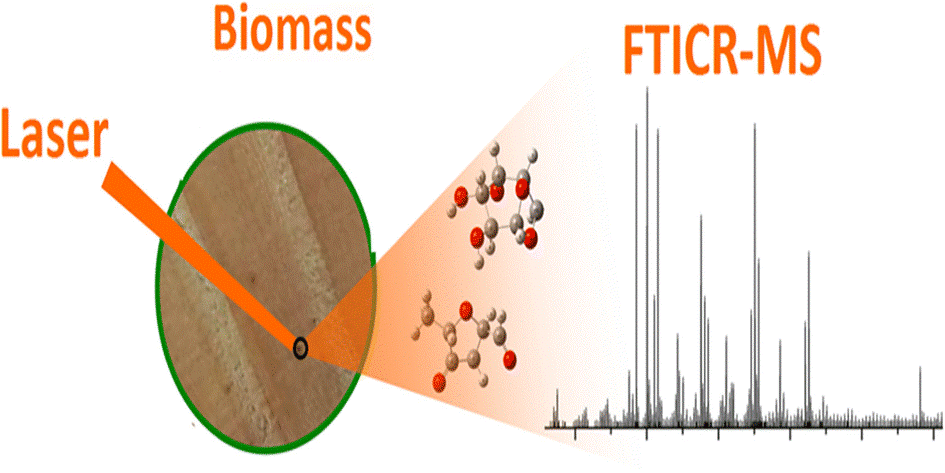Accueil du site > Production scientifique > Characterization of biomass and biochar by LDI-FTICRMS – Effect of the laser wavelength and biomass material
Characterization of biomass and biochar by LDI-FTICRMS – Effect of the laser wavelength and biomass material
Date de publication: 30 juillet 2018
F. Aubriet, T. Ghislain, J. Hertzog, A. Dufour, G. Mauviel, V. Carré
Journal of The American Society for Mass Spectrometry 29 1951-1962 (2018). DOI
Travail réalisé sur le site de l’Université de Lorraine.
Abstract

The pyrolysis of the lignocellulosic biomass is a promising process to produce biofuels or green chemicals. Specific analytical methods have to be developed in order to better understand the composition of biomass and of its pyrolysis products and therefore to optimize the design of pyrolysis processes. For this purpose, different biomasses (Douglas and Miscanthus) and one biochar were analyzed by laser desorption/ionization Fourier transform ion cyclotron resonance mass spectrometry (LDI FT-ICR MS). This method allowed the biomass and biochar to be analyzed without any sample preparation and with a spatial resolution of about 100 μm. The influence of LDI conditions (laser wavelength and laser irradiance) and the nature of the biomass and biochar on the obtained mass spectrum were investigated. The nature and origin of the observed ions highly depended on LDI conditions. In the softest laser–biomass interaction conditions (low laser irradiance), the detected ions were related to the nature of the investigated biomass. Indeed, the main part of the detected species came from the different biomass subunits and was produced by photolysis of covalent bonds. When more severe laser irradiation conditions were used, the obtained mass spectra gathered the ions relative to (i) the chemical components of the investigated samples, (ii) the recombination products of these species in the gas phase after their ejection from the sample surface, and (iii) the compounds produced by laser pyrolysis of the sample. This was expected to be useful to mimic thermal pyrolysis.








